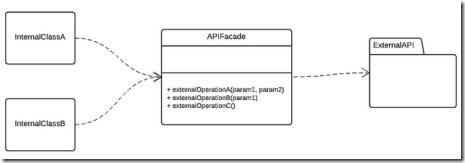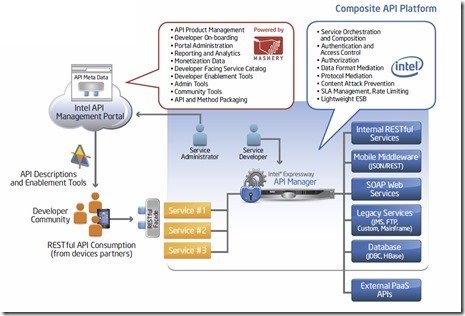Securing BYOD
With the rapidly emerging cloud-mobile-social Troika coupled with the API Economy, there are so many questions about how to design systems that can allow application access to internal information and resources via APIs that will not compromise the integrity of enterprise assets. And on the other hand, how do we prevent inappropriate personal information from propagating inappropriately as personal data stores and information is processed and accessed? Indeed, I have read so many articles lately that predict utter catastrophe from the inevitable smart phone and tablet application rush that leverages the burgeoning API economy.
In recent posts, I have posited that one approach to solving the problem is by using an IdMaaS design for authentication and authorization.
Another proposed approach—that keeps coming up—is a system construct that is referred to as the “Façade Proxy.”
A place to start to understand the nature of Facades is in an article by Bruno Pedro entitled “Using Facades to Decouple API Integrations.”
In this article Bruno explains:
A Façade is an object that provides simple access to complex - or external - functionality. It might be used to group together several methods into a single one, to abstract a very complex method into several simple calls or, more generically, to decouple two pieces of code where there's a strong dependency of one over the other.
What happens when you develop API calls inside your code and, suddenly, the API is upgraded and some of its methods or parameters change? You'll have to change your application code to handle those changes. Also, by changing your internal application code, you might have to change the way some of your objects behave. It is easy to overlook every instance and can require you to double-check multiple lines of code. There's a better way to keep API calls up-to-date. By writing a Façade with the single responsibility of interacting with the external Web service, you can defend your code from external changes. Now, whenever the API changes, all you have to do is update your Façade. Your internal application code will remain untouched.To shed even more light on how a Façade Proxy is designed and can be used to address yet another problem is blog post from Kin Lane. Kin is an API Evangelist extraordinaire and I learn a lot from him in his writings. Kin recently wrote in a blog post entitled “An API that Scrubs Personally Identifiable Information from Other APIs”:
I had a conversation with one UC Berkeley analyst about a problem that isn’t just unique to a university, but they are working on an innovative solution for.
The problem:
UCB Developers are creating Web Services that provide access to sensitive data (e.g. grades, transcripts, current enrollments) but only trusted applications are typically allowed to access these Web Services to prevent misuse of the sensitive data. Expanding access to these services, while preserving the confidentiality of the data, could provide student and third party developers with opportunities to create new applications that provide UCB students with enhanced services.
The solution:
Wrapping untrusted applications in a “Proxied Façade Service” framework that passes anonymous tickets through the “untrusted” application to underlying services that can independently extract the necessary personal information provides a secure way of allowing an application to retrieve a Web User’s Business data (e.g. their current course enrollments) WITHOUT exposing any identifying information about the user to the untrusted application.
I find their problem and solution fascinating, I also think it is something that could have huge potential. When data leaves any school, healthcare provider, financial services or government office, the presence of sensitive data is always a concern. More data will be leaving these trusted systems, for use in not just apps, but also for analysis and visualizations, and the need to scrub personally identifiable information will only grow.
Finally, Intel recently announced its Expressway API Manger product suite. EAM is a new category of service that Intel is calling a “Composite API Platform.” It is referred as such as the platform is a composite of a premise-based gateway that allows organizations to create and secure APIs that can be externalized for secure access through a cloud-based API management service from Mashery designed to help organizations expose, monetize and manage APIs to developers. In its design, Intel has created a RESTful Façade API that exposes APIs to developers for internal information and resources of an organization. It is very similar to the design approach outlined by Kin. This approach looks to be an elegant use of the Façade pattern to efficiently manage authorization and authentication of mobile apps to information that needs to remain secure.
I am learning a lot about the possible API designs—like the Façade Proxy—that can be useful constructs for organizations to successfully participate in the API economy and not give up the farm.



















































